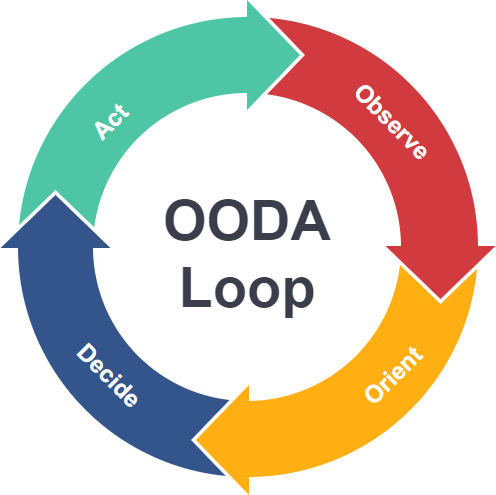Published April 30, 2021

- Observe : Identify the problem or threat and gain an overall understanding of the internal and external. This might be data gathering. The current organizational state, info about competitors and markets are collected. An observation is only a snapshot of time and that should not be disregarded.
- Orient : Reflect on what has been found in observations. Because so many decisions are unconscious / instinctual, making a conscious decision requires situational awareness and understanding. This step requires understanding why decisions are made before taking action. For an organization, situational models can be created with machine learning tools to remove biases. On a smaller scale, orientation can be done by creating mental models and rehearsed drills to shape judgement. Use research and existing methods to make good decisions.
- Decide : Create a roadmap. Have some meetings. Make suggestions towards action. Get feedback from subject matter experts and people on your team.
- Act : Carry out the decision and related changes. This step might include testing such as A/B testing before action.
- Number of scenarios that can play out
- Denial that an event has occurred and refusing to acknowledge it immediately.
- Complexity of the stimuli
- The need for approval prior to action
- Emotional stress of the team or environment
- Trust between team members
- The level of intuitive skill related to the incoming stimulus
- Level of clarity in the business’ goals
- Constantly changing inputs
- MDMP – Military decision making process
- PDCA – Plan, do, check / Shewart cycle
- SWOT analysis
- GTD – Getting things done method
Comments are closed.